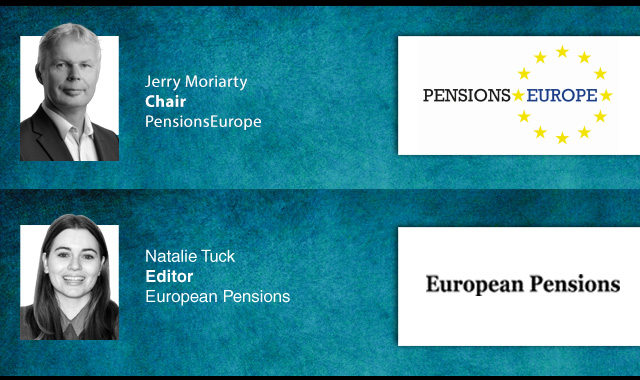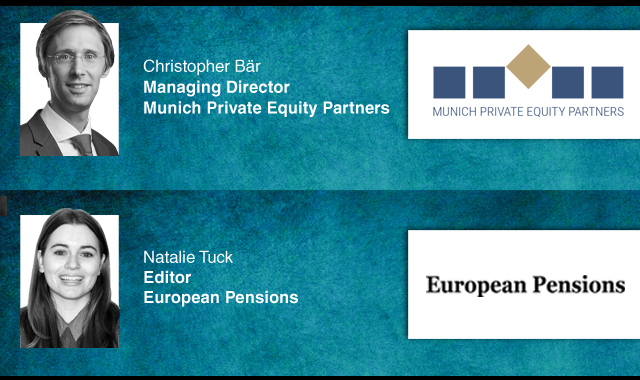Francesca Fabrizi asks ATP CEO Lars Rohde and NOW:Pensions CEO Morten Nilsson about their success in both Denmark and now the UK
Times have been tough for institutional investors and pension funds have had the toughest job of all, battling with rising longevity rates against a backdrop of unprecedented economic volatility. So when you come across a pension fund that recorded a profit of 3.9 billion DKK (€522 million) in the first half of 2012, it’s worth stopping to ask them what their secret is.
ATP is a mandatory Danish supplementary pension scheme covering almost the entire Danish population. With assets under management of approximately 602 billion DKK (€80 billion) by end July 2012 it’s not only the largest pension fund in the country but one of the largest in Europe. So how has it managed to rise to today’s challenges and what’s on the cards for the future?
“For now we’re just sticking to our low risk strategy that we know works well”, says current chief executive of the fund, Lars Rohde (who was recently appointed as the new central bank governor, commencing February 2013).
“Our half year results were extremely satisfying – we more or less kept our low risk budget attitude in the first half of the year but on the other hand we still had a surplus, and our funding position is very good. So in that way for now it’s business as usual.”
The future, he adds, lies some-what in the hands of the European authorities: “The game changer for us could be what is going to happen over the coming months in the eurozone. All the tail risk is associated with what’s going on there – is Spain going to get through this period? Is the situation in Greece going to be handled in an orderly way? These are the big questions, and we are waiting to see what’s going to happen, and therefore have quite a low use of our risk capacity for the time being.”
Hedging forms a large part of the ATP strategy and for the first half of 2012, its hedging activities alone posted a profit of DKK 1.3 billion, meaning that the return on the hedging portfolio more than offset the increase in the pension liabilities created by the fall in interest rates during that period.
Rohde comments: “It’s an integral part of our business model to be fully hedged and it has served us well over the last 10 years.”
Another key point, says Rohde, is that the risk strategy of the fund has remained flexible. He explains: “Over the years we have been able to change our risk attitude in a way that has been helpful for the fund. First of all we have a dynamic risk budgeting strategy which means we are taking risk off the table, if our reserves come under pressure, in a very automatic way. The second part of that is that we have now and then used tail risk protection. We did it in 2008, we did it again last year and it has served us very well.”
Also, the separation of the hedged portfolio and investment portfolio has made the investment part of the game akin to a hedge fund. “Over the last 13 or 14 quarters we have had positive return on this hedge-fund like portfolio. Some in the industry have even referred to us as the world’s best hedge fund disguised as a pension plan. Indeed we are using some of the same instruments and same ways of thinking as a hedge fund, with a huge emphasis on risk control and reserve protection and not taking overly optimistic risk bets for the future. We have a long tradition of having a very good risk control.”
All in all, it is evident that being the best it can be has become part of the make-up of ATP. A prime example lies in the fact that the fund is going to be Solvency II compliant even though it doesn’t fall under the Solvency II remit at the moment.
“So while the other Danish pension funds and insurance companies have a new interest rate curve to calculate the value of their liabilities, we haven’t changed ours”, says Rohde. “It remains lower which means that the value of our liabilities are higher, but our curve has a big advantage in that it is investible. So, we are able to hedge also accounting-wise our liability side.”
ATP is now trying to inject some of its success into the UK pensions market with the launch of NOW: Pensions, headed up by former head of international operations at ATP, Morten Nilsson. The new firm, backed by ATP, aims to help UK companies manage the biggest change the country has ever seen in the history of pensions – the introduction of auto-enrolment, whereby all eligible UK companies will be forced by legislation to auto-enrol their employees into a company pension scheme.
Nilsson hopes their offering will bring some simplicity to an overly complicated market: “Going back to two years ago when I first came to the UK, we were analysing the market and asking whether there was anything we could offer that would be relevant. What we concluded was that, while the dynamics in the UK market were different to the Danish market, the needs were very similar.”
NOW: Pensions research shows that what the pension fund member wants is to see long-term stable growth on their savings; they want to know exactly what they’re paying into their pensions; and they want certainty that the people managing that money on their behalf are doing their best to give them value for money. Also, when they need to make a decision, they want someone to guide them.
On the flip side, adds Nilsson, they don’t want to be educated in investment. They don’t want to be educated into being annuity experts. There are also a lot of things an individual will find difficult to do: “It’s very expensive to diversify your investments, for example. It’s very expensive to be a day trader. It’s very expensive or even impossible to hedge interest rate developments. So there are things that are almost impossible or very expensive to do on an individual basis. That’s where a pension fund can add value.”
When building the NOW:Pensions proposition, Nilsson and his team not only considered the members’ requirements but also looked closely at the companies’ needs i.e. the decision-makers in the auto-enrolment process, who are having to take on a huge administrative burden.
He explains: “There is all the testing and figuring out who needs to be enrolled and when, and then there are the indirect costs of processing all that, while you also run the risk of your employees being surprised that suddenly their salary is being deducted, so there is a lot of communication that needs to be done around that too. On the plus side there is the benefit of offering a pension which is a really good employee benefit.
“So when we looked at the employer’s side, we focused a lot on how we could help employers, make it easy for them to comply with auto-enrolment given the compli-ance reporting they need for The Pensions Regulator, but also make the communication with their employees as easy as possible.”
One thing that makes the NOW: Pensions offering easy to commu-nicate is that they are not putting any fund options in front of employees. “Basically we are saying ‘welcome to the scheme. This is what your employer will be contributing, this is what you will be contributing; if you want to contribute more, press here, if you want to opt out, press here.’ That’s it! So they don’t have to choose between 3, 10, 20 different funds. Also, when they get closer to retirement we will de-risk the portfolio and we will, using a few basic questions, guide them towards buying the right annuities for them.”
And so far so good. NOW: Pensions already has a diverse client portfolio which includes a range of different sized companies.
“One interesting thing we have seen is that the companies who have chosen us have done so for different reasons. Some are doing it because of our ability to handle auto-enrolment and help them comply with the new regime in a cost efficient way. Others are doing it because this is exactly the pension product they are looking for.”
Having ATP as its backer also inevitably plays its part in instilling confidence in potential new clients. Nilsson says: “ATP has been a multi-employer scheme since it was established. The companies were auto-enrolled and they had to auto-enrol their employees into it. It also handles the smallest and largest companies in Denmark with all the complexities that brings, so there is a lot of experience and know-how we can draw on from our Danish counterparts.”
NOW: Pensions can also benefit from the investment success of ATP. Nilsson concludes: “At ATP we focus on three things – the objectives, the pension product and the investment side. We call these the three sisters. So what we did when we designed our product in the UK was ask: What it is that works so well in Denmark? What are our objectives for our members here? And how can we use the Danish investment portfolio and make it a UK portfolio – use the same risk classes, the same risk management tools, the same overall approach, because surely, that has to be a recipe for success?”
Latest News
-
PensionsEurope warns against loss of transparency as it backs Omnibus I
-
Three trends reshaping pension systems worldwide - ETK
-
Denmark’s PFA completes DKK 40bn investment switch
-
News in brief: 12 December
-
NBIM ‘all-in on AI’ as it publishes updated strategy
-
€550bn Dutch pension shift to trigger ‘significant unwind’ of longer-dated bonds
Podcast: Stepping up to the challenge

In the latest European Pensions podcast, Natalie Tuck talks to PensionsEurope chair, Jerry Moriarty, about his new role and the European pension policy agenda
Podcast: The benefits of private equity in pension fund portfolios

The outbreak of the Covid-19 pandemic, in which stock markets have seen increased volatility, combined with global low interest rates has led to alternative asset classes rising in popularity. Private equity is one of the top runners in this category, and for good reason.
In this podcast, Munich Private Equity Partners Managing Director, Christopher Bär, chats to European Pensions Editor, Natalie Tuck, about the benefits private equity investments can bring to pension fund portfolios and the best approach to take.
In this podcast, Munich Private Equity Partners Managing Director, Christopher Bär, chats to European Pensions Editor, Natalie Tuck, about the benefits private equity investments can bring to pension fund portfolios and the best approach to take.
Mitigating risk
BNP Paribas Asset Management’s head of pension solutions, Julien Halfon, discusses equity hedging with Laura Blows
© 2019 Perspective Publishing Privacy & Cookies







Recent Stories